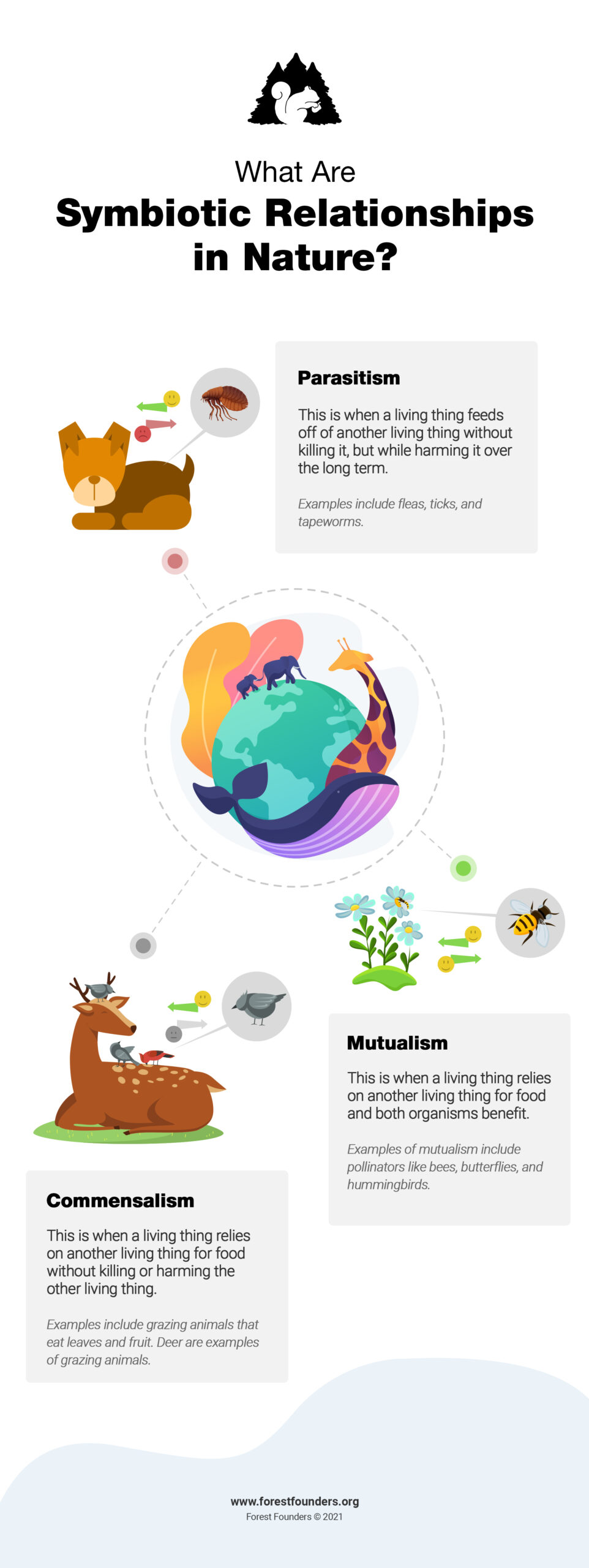The natural world is a complicated place. Every living thing relies upon something to survive, and every living thing provides a resource that helps the survival of something else. It’s like a chain where every plant and animal of every size is a link!
Living things are a part of the biosphere. All living things grow, survive, and reproduce because they exist with other living and non-things that help provide the food and other resources that sustain them. These are interdependent relationships. No living thing can exist without these interdependent relationships.
How do living things use other living things to survive?
All living things are a part of the biosphere. The biosphere contains every ecosystem on the planet.
Ecosystems change constantly. This is because of the interdependent relationships of different living things (organisms) and non-living things. Organisms need air, sunlight, water, and shelter (non-living things), as well as food (living things). The ways that the organisms source sunlight, water, shelter, and food affect their environment.
For example, let’s say that a group of animals walk through a forest area to a water source. The weight of the animals causes grooves to form in the ground. When it rains, the grooves collect water, which causes the grooves to deepen. The deep grooves create a channel for water flow. The flow of water collects in an area that was previously dry. This causes plants to begin to grow, which leads to animals to come to that area for food. This interdependence has changed the terrain and the behavior of the organisms that rely upon it.
How organisms use other organisms.
Organisms – plants and animals – rely on other organisms for lots of things, but they mainly need them for food. Organisms use other organisms for food in different ways.
- Decomposers. These are organisms that rely upon the death and decomposition of other organisms so that they can gain nutrients. The process causes other elements, such as carbon dioxide and nitrogen, to be released into the air and soil. Bacteria and fungi are two types of decomposers.
- Producers. Producers “produce” their own food supply using a process called photosynthesis. Plants are producers because they use the energy from sunlight, water, and carbon dioxide to produce a nutrient called glucose, which is a type of sugar. This is how plants gain the energy to grow.
- Consumers. These are organisms that eat other organisms. These include insects that eat plants and other insects, and animals that eat plants, insects, and other animals.
Decomposers, consumers, and producers rely upon organisms in different ways for food, but they are all still interdependent. Ecosystems can only be healthy if they have the right balance of different types of organisms.
However, as we said earlier – the natural world is a complicated place! While all kinds of different organisms rely upon each other and live and work together to sustain their environment (that’s called biodiversity), every environment is capable of sustaining only a certain amount of organisms within populations. Organisms themselves are limited by their ability to withstand environmental changes, diseases, and a reduction in resources (food and water). These limitations also determine which living things will survive in a particular environment because organisms start to adapt to their surroundings over time.

Sometimes organisms compete with each other.
Because resources are limited in most environments, different organisms must sometimes compete with each other to survive. Let’s say that two species of animals both eat the same food. They have to develop different ways to get food so that they can survive. For example, one species of animal might become faster and outrun the competition. Another species might learn to hunt at night when the other species is asleep. Sometimes the two different species fight for the food.
Competition can lead to conflict, but it can also lead to species evolving and developing physical or behavioral skills that help them survive.
Sometimes organisms prey upon each other.
When organisms eat other organisms, it’s called predation. However, there are different kinds of predation in interdependent relationships. There is true predation, where an organism eats another organism, killing it. This can be a tiger eating a calf, or a bird eating an insect. Parasitism is an example of one organism relying upon another for food, but although it does not kill the food source, the source is harmed over time. There is also grazing, which is a form of commensalism. This is when an organism consumes a part of another organism for food without killing it. Examples include animals eating leaves, the tops of grasses, and fruits. The plants are still alive, and can grow more fruit, stalks, and leaves. Parasitism and commensalism are two examples of symbiotic relationships, where one organism benefits from another without killing it. Symbiotic relationships also include mutualism, where both organisms benefit, which we will discuss below.
Sometimes organisms have mutually beneficial relationships.
Mutually beneficial relationships are when both organisms benefit from an interaction. An example would be a hummingbird that retrieves nectar from flowers while depositing pollen, causing the plant to produce offspring (pollination). Pollinators of all different species – butterflies, bees, wasps, ladybugs – engage in mutually beneficial relationships, and are responsible for the health of millions of plant species.
Interdependence is essential to the health and survival of the world’s ecosystems. Unfortunately, as our global forests disappear due to human interference and the growing climate crisis, the biodiversity of the natural environment is being threatened. Forest Founders is committed to restoring the world’s forests, protecting their valuable biodiversity, and enhancing nature’s ability to capture the carbon emissions that are creating our current climate crisis. To learn how you can help our mission to protect and increase the world’s forests, please visit our information page today.